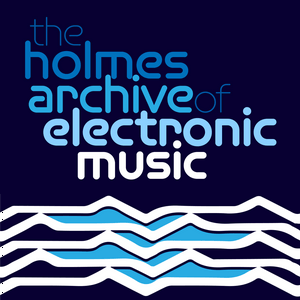Chapter 25, Electronic Music from Japan, China, and The Asia-Pacific, Part 2
Episode 165
Chapter 25, Electronic Music from Japan, China, and The Asia-Pacific, Part 2. Works Recommended from my book, Electronic and Experimental Music
Welcome to the Archive of Electronic Music. This is Thom Holmes.
This podcast is produced as a companion to my book, Electronic and Experimental Music, published by Routledge. Each of these episodes corresponds to a chapter in the text and an associated list of recommended works, also called Listen in the text. They provide listening examples of vintage electronic works featured in the text.
The works themselves can be enjoyed without the book and I hope that they stand as a chronological survey of important works in the history of electronic music. Be sure to tune-in to other episodes of the podcast where we explore a wide range of electronic music in many styles and genres, all drawn from my archive of vintage recordings.
There is a complete playlist for this episode on the website for the podcast.
Let’s get started with the listening guide to Chapter 25, Electronic Music from Japan, China, and The Asia-Pacific, Part 2. from my book Electronic and Experimental music. In the playlist, the musical works are in chronological order by region (e.g., China, Taiwan).
Playlist: ELECTRONIC MUSIC FROM CHINA AND THE ASIA-PACIFIC
Time
Track Time
Start
Introduction –Thom Holmes
01:39
00:00
China
1. Fengjiangzou, “败臼,” (2021). From a survey of contemporary Chinese electronic music produced by the Unexplained Sounds Group.
03:36
01:40
2. Yan Jun, “In A Sense That Yet To Be Made” (2022). From a cassette release. Yan Jun, musician and poet, born in Lanzhou and based in Beijing.
46:44
05:16
3. Zhu Wenbo, Zhao Cong, Li Song, "3 lines" (live recording 2023 in Wujing, Beijing). “Sounds from transducer feedback, elastic ropes and other objects (foil, paper…).” Trio of improvising electronic musicians.
08:59
52:00
Taiwan
4. Scattered Purgatory, “破城入山” (Ramming the Town, Roaming the Mountain) (2014). Experimental drone/folk/rock band from Taipei, Taiwan comprised of members Lu Li-Yang and Lu Jiachi.
07:48
01:00:58
5. Mong Tong, “介紹 (Jiè Shào)” and “地府 (Dì Fǔ)” (2021). Mong Tong is a Taiwanese psychedelic music band formed by brothers Hom Yu and Jiun Chi. From the album, Music From Taiwan Mystery.
06:27
01:08:44
6. Mong Tong, “天庭 (Tiān Tíng)” (2021). From the album, Music From Taiwan Mystery.
07:38
01:15:08
Thailand
7. Rik Wachirapilun, “สังวาส (Fuck)” (1999). Rik is a Thai musician whose music combines elements from Thai, Indian, Arabic and Western New Wave/Indie Rock cultures.
04:15
01:22:46
Indonesia
8. Otto Sidharta, “Gamelan” (1980). From the album, Otto Sidharta, Indonesian Electronic Music 1979-1992.
11:28
01:27:02
9. Melcyd, “Hellephant” (2015). From the cassette compilation, Pekak! Indonesian Noise 1995-2015: 20 Years of Experimental Music from Indonesia. “Melcyd is an experimental music group that was born in the indie-pop scene of Yogyakarta city and shifted to a more experimental form in their later period as a music group.”
06:12
01:38:24
10. Theonugraha, “Ngayau” (2015). From the cassette compilation, Pekak! Indonesian Noise 1995-2015: 20 Years of Experimental Music from Indonesia.
04:01
01:44:36
11. To Die, “Di Lautan Kegamangan” (2015). From the cassette compilation, Pekak! Indonesian Noise 1995-2015: 20 Years of Experimental Music from Indonesia. A list of recordings can be found here.
04:25
01:48:38
Philippines
12. Jose Maceda, “Ugnayan” excerpt (1973/2009). Ugnayan, music for 20 radio stations. This release is a stereo mix of the original twenty tracks recorded under the supervision of the composer in 1973 in the Philippines.
22:21
01:53:02
13. Jose Maceda, “Strata” (1987).
19:42
02:15:22
New Zealand
14. Douglas Lilburn, “The Return” (1965). Narrator, Tim Elliott; Technical Supervision, Willi Gailer; Maori Voice, Mahi Potiki. Tape work with voices. Douglas Lilburn (1915-2001) has been described as the "grandfather of New Zealand music," having worked in both conventional classical styles as well as pioneering electro-acoustic music in New Zealand.
17:00
02:34:58
15. Annea Lockwood, “Tiger Balm” (1970/1987). Revised Tape, Annea Lockwood; Engineering Assistance, Peter Grogono. “Tiger Balm was originally mixed in 1970 at Peter Zinovieff's Putney Studio in London. It was revised by the composer in her own studio a number of years later. This is the revised version.” Born in New Zealand, Annea Lockwood moved to England in 1961, studying composition at the Royal College of Music, London and followed courses in electronic music with Gottfried Michael Koenig.
10:26
02:51:56
16. Douglas Lilburn, “Soundscape with Lake and River” (1979).
11:01
03:02:22
17. Ros Bandt, “Stack (Red Rhythmic Pulses In Red Paint and Electrified Steel)” (2000). Concept, composed, performed, sound design, art direction, design, photography, Ros Bandt. Bandt is a musicologist, sound sculptor and instrument designer.
09:57
03:13:22
18. Rory Storm, “My Little Sun” (2005). Sound artist from New Zealand. Electric guitar, drum loop, bass guitar, keyboards, samples, acoustic guitar, field recording, vocals, tape, piano, ocarina, Metasynth, Rory Storm.
05:41
03:23:16
Opening and closing voicings, Anne Benkovitz.
Additional opening, closing, and other incidental music by Thom Holmes.
My Books/eBooks: Electronic and Experimental Music, sixth edition, Routledge 2020. Also, Sound Art: Concepts and Practices, first edition, Routledge 2022.
See my companion blog that I write for the Bob Moog Foundation.
For a transcript, please see my blog, Noise and Notations.
Original music by Thom Holmes can be found on iTunes and Bandcamp.
